Virus diseases can commonly occur on both snap and dry bean crops in New York, but have become less common then in the past due to use of resistant varieties and reduced populations of soybean aphid, the most important vector for major bean viruses. Viruses can cause reduced yields and inferior quality of the product. Because dry beans have a longer vegetative cycle, viruses in general are more destructive for this crop. Most bean viruses are spread by aphids in a nonpersistent manner, with insecticides providing little protection against virus spread during the season. In addition to being aphid transmitted, some bean viruses are seedborne in bean or in other hosts and can overwinter in cultivated plants and weeds. Nematodes can transmit two viruses, which cause only minor plant injury.
Major Bean Viruses
Bean common mosaic virus (BCMV)
BCMV is still an important disease of beans worldwide, but is less of a problem in commercial bean varieties because many possess genes for resistance. The most common strains are the type virus known formerly as bean virus 1 (BV-1) and a New York strain (NY-15). Some, but not all, dry bean varieties are resistant to one or both strains (see table 1), whereas most snap bean varieties are resistant to both strains.
Typical symptoms in bean consist of green mosaic and downward cupping along the main vein of each leaflet (Figure 1). Green vein banding, blistering, and malformation are common in leaves of the same plant (Figure 2). Plants are reduced in size, and pods may be mottled and malformed. These symptoms could be easily confused with those caused by cucumber mosaic virus (CMV). However, the BCM symptoms persist, whereas those caused by CMV are transitory. In some dry bean varieties (see Table 1) resistance to mosaic is expressed as a hypersensitive reaction conferred by the I gene, leading to a condition called “black root.” Infection with some strains causes root and stem discoloration, rapid wilt (systemic necrosis), and eventual death.
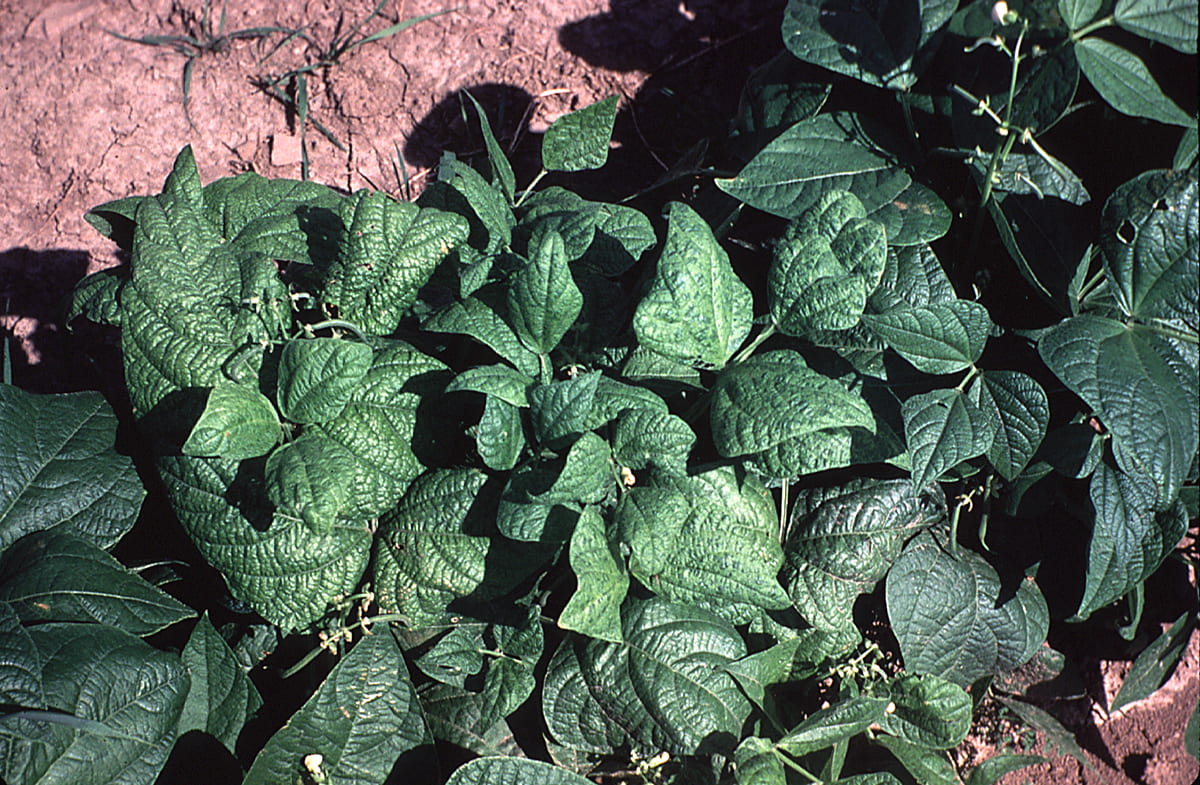
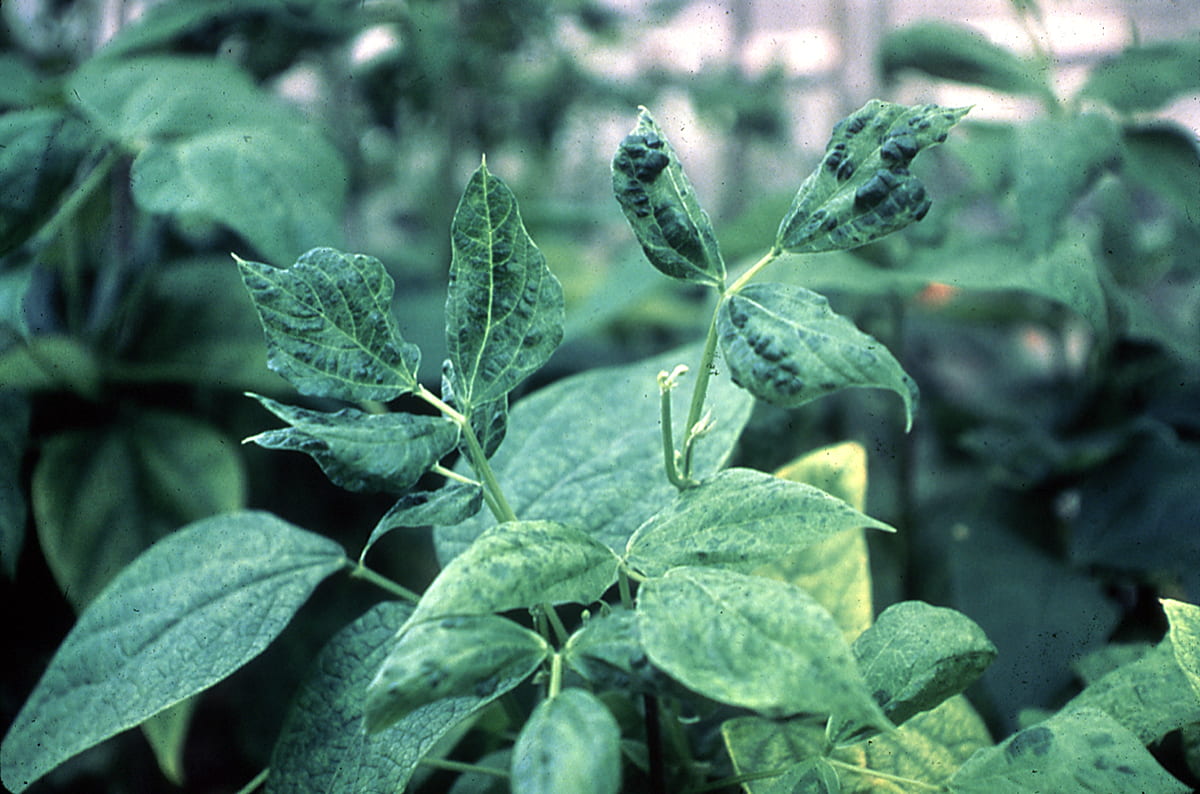
BCMV is seedborne in bean, especially if the seed was produced locally. The virus is rarely present in wild legumes. The virus is efficiently transmitted by several aphid species including the following: bean aphid (Aphis fabae), cowpea aphid (Aphis craccivora), pea aphid (Acyrthosiphon pisum), potato aphid (Macrosiphum euphorbiae), and the green peach aphid (Myzas persicae).
BCMV is most effectively controlled by growing resistant cultivars and using virus-free seed.
Table 1. Reaction of selected dry bean varieties to two strains of bean common mosaic
|
Reaction to |
||
| Class and variety | Type | NY 15 |
| Light Red Kidney (LRK) | ||
| Cal. LRK | S | S |
| Redkloud | R | R |
| Ruddy | R | R |
| Redkote | R | R |
| Sacramento | S | S |
| Black | ||
| Black Turtle Soup1 | S | S |
| Midnight | R | R |
| T-39 | R | R |
| Dark Red Kidney (DRK) | ||
| Cal. DRK | S | S |
| Montcalm | R | R |
| Pinto | ||
| Ul-111 | R | R |
| Ul-114 | R | R |
| Navy | ||
| Seafarer1 | R | R |
| Sanilac | R | S |
| Small White | ||
| Aurora1 | R | R |
R = Resistant; S = Susceptible. 1Varieties that have exhibited hypersensitive “black root” reaction.
Bean yellow mosaic virus (BYMV)
BYMV also called bean virus 2 (BV-2), was the most widespread bean virus in New York and use to be found nearly every year. The symptoms of this disease may vary depending upon the variety, the virus strain, the stage of growth at the time of infection, and environmental factors.
BYM symptoms consist of leaf mosaic formed by contrasting yellow or green mosaic areas (Figures 3 and 4). Pods are usually not affected, but the number of seeds per pod may be reduced.
BYMV is not seedborne in beans, but may be in other legumes. The most common overwintering hosts include clovers, wild legumes, and certain flower crops such as gladiolus. The virus is spread in nature by the same aphid species that are mentioned under BCMV. There are commercial varieties resistant to BYMV.
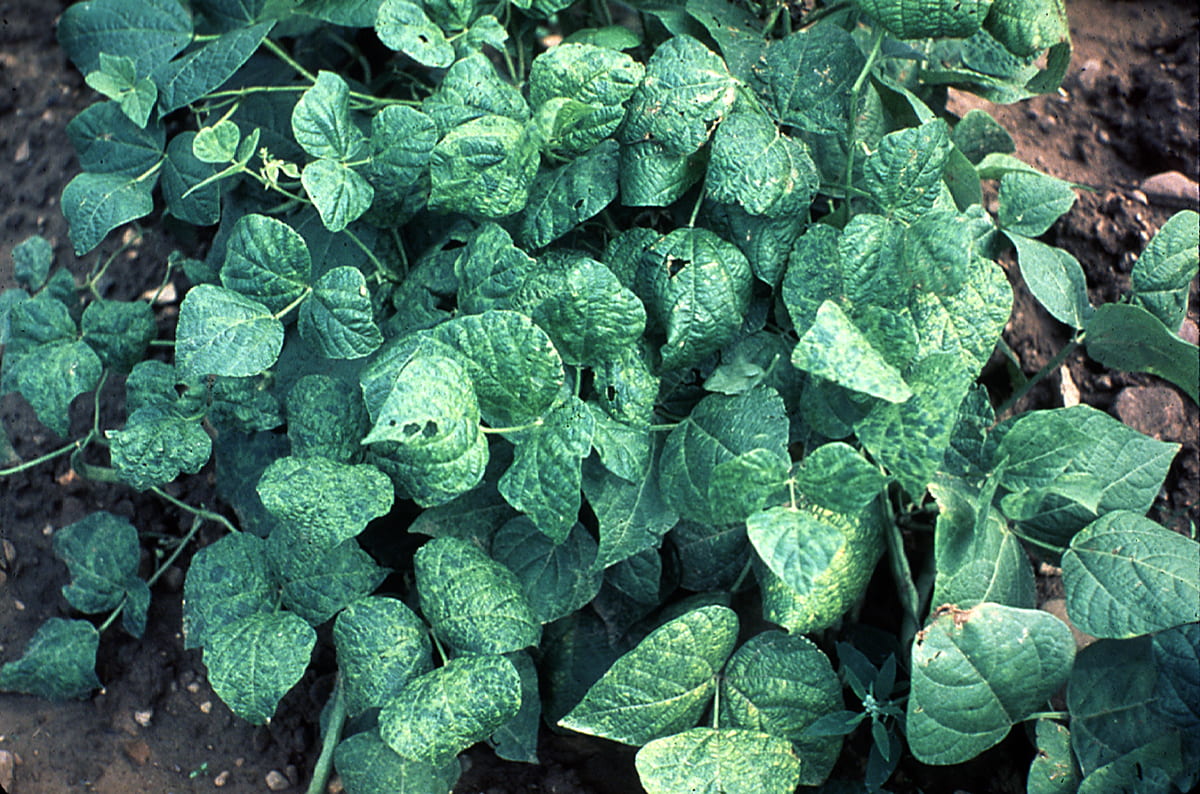
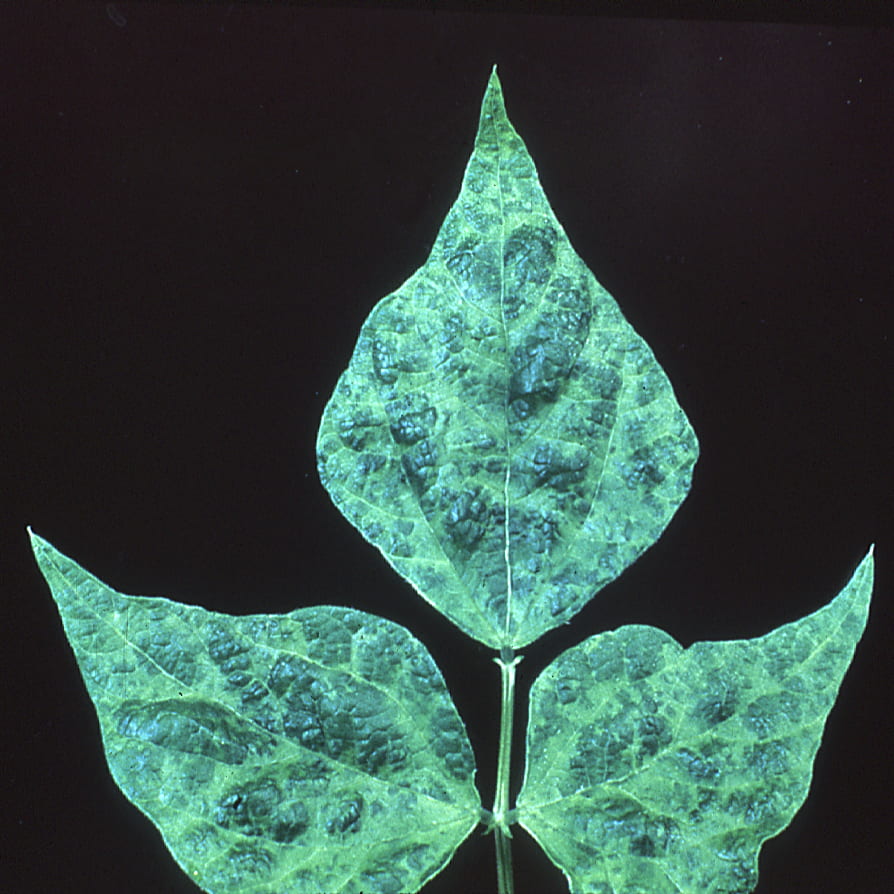
Cucumber mosaic virus (CMV)
CMV can infect almost 800 plant species, but only a specific strain can cause a disease of bean and certain other legumes. Symptoms consist of leaf curl, green mottle and blistering (Figure 5), and a zipperlike rugosity along the main veins. involving only a few leaves. Symptoms resemble those for BCMV as noted above, but plants usually recover and resume normal growth.
CMV may be seedborne in some bean varieties but, more importantly, is overwintered in many weed species (chickweed, milkweed, purslane, and clover). The virus is transmitted by at least 60 aphid species.
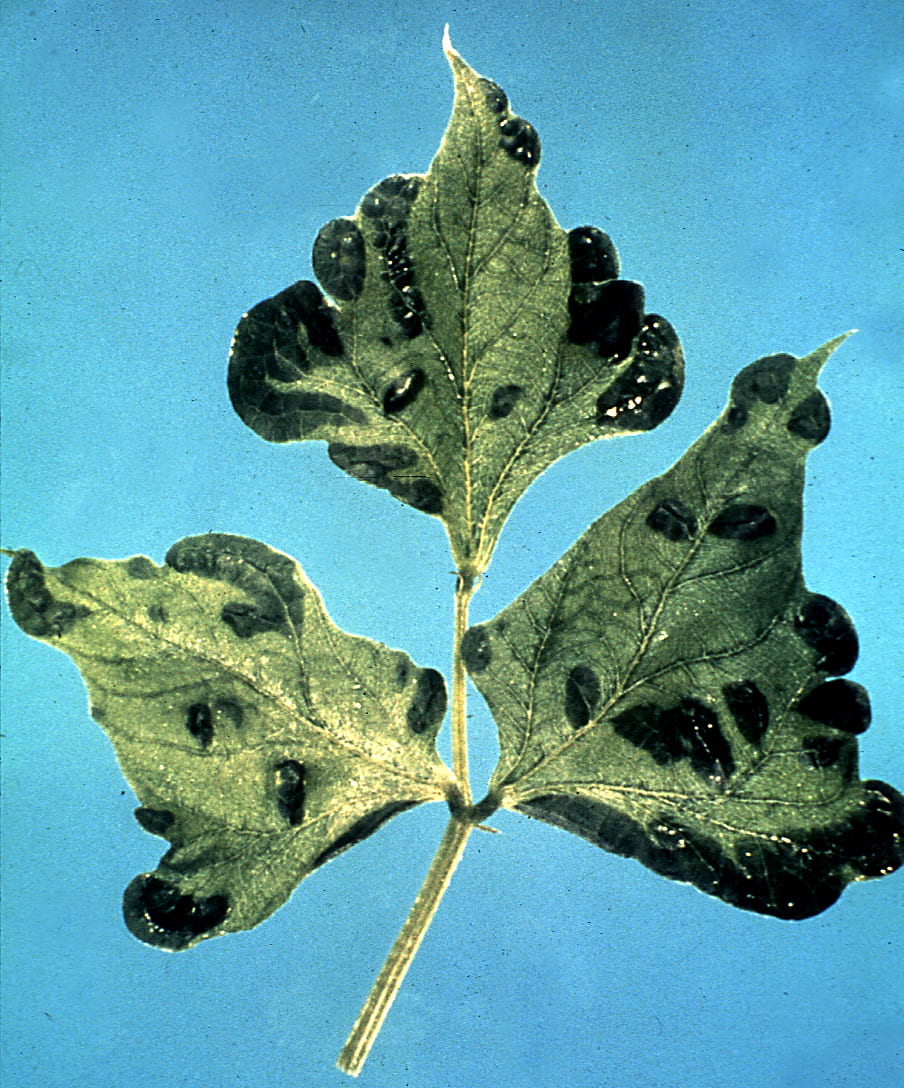
Clover yellow vein virus (CYVV)
CYVV was previously considered as the severe strain of BYMV because of many similarities in host range and symptom expression. However, this virus, in addition to causing a prominent yellow mosaic, malformation, and reduction in plant size (Figure 6). can induce pod distortion (Figure 7). In addition to infecting bean, this virus can be recovered from cucurbits, peas, wild violets, and many cultivated and wild legumes. As with all the major bean viruses, CYVV is aphid transmitted and overwinters in legumes and some ornamentals like garden violet.
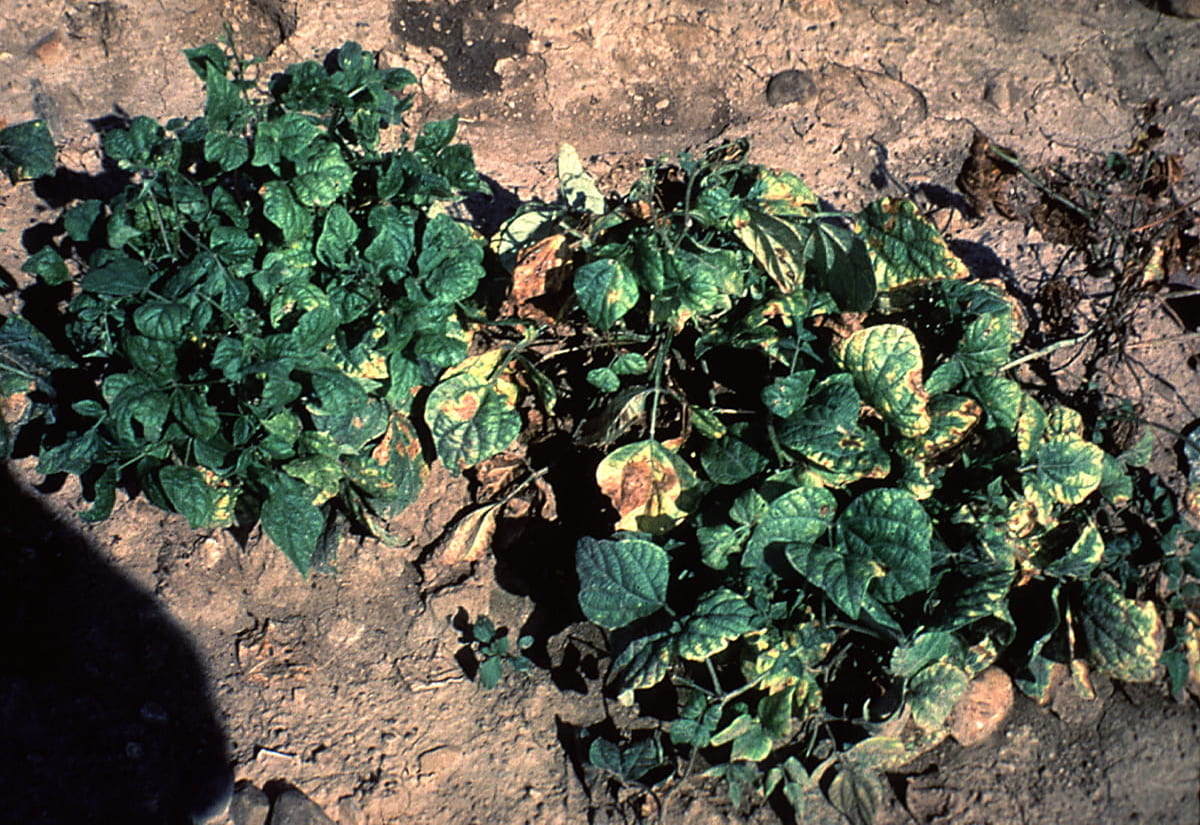
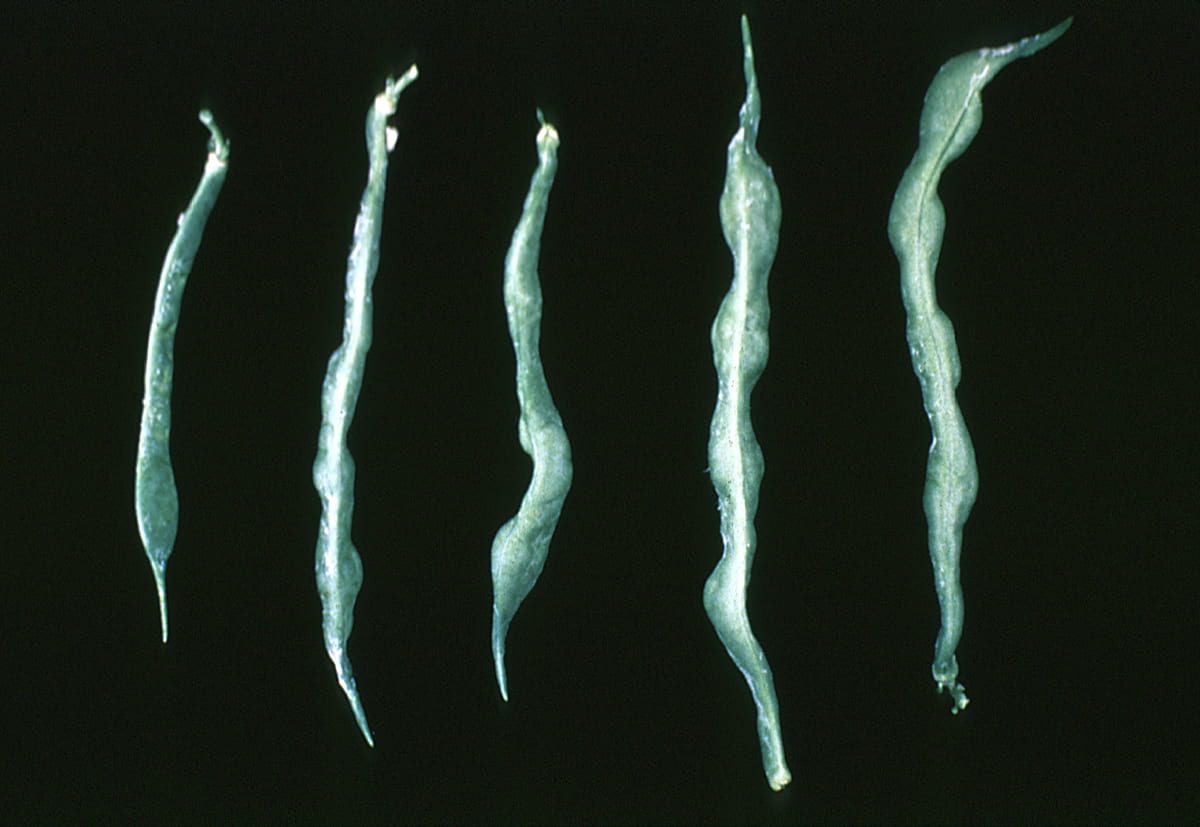
Minor Bean Viruses
Tobacco and tomato ringspot viruses (TRSV and TmRSV) are often found infecting the crop at the same time. Initial symptoms are very prominent and consist of chlorotic ringspots, mottling, malformation, and necrosis. Plants recover from this severe stage, and later foliage may appear completely normal. These viruses are not seedborne in beans, but may be in other legumes. Unlike all other bean viruses, these viruses are spread by the dagger nematode (Xiphinema americanum), and the viruses can overwinter on many weed species without expressing virus symptoms. Resistance is available in some bean varieties.
Alfalfa mosaic virus (AMV) can cause a disease of beans noted by scattered bright yellow dots on the leaves, which are characteristic for this virus also when it infects other plants. AMV does not appear to reduce yield or quality of the product. The virus may be spread by many aphid species.
Soybean mosaic virus (SMV) induces symptoms closely resembling those caused by BCMV. Most leading commercial snap bean varieties are resistant to SMV, with only a restricted number showing susceptibility. SMV is spread by several aphid species, and the major source of infection is soybean, for this virus is commonly seedborne in that crop
Watermelon mosaic virus 2 (WMV-2) causes symptoms similar to those incited by some strains of BYMV. Most commercial snap bean varieties are resistant to WMV-2. The leading source of inoculum is some clover species. The virus is not known to be seedborne and is spread in nature by aphids.
More information:
Margaret Tuttle McGrath
Associate Professor Emeritus
Long Island Horticultural Research and Extension Center (LIHREC)
Plant Pathology and Plant-Microbe Biology Section
School of Integrative Plant Science
College of Agriculture and Life Sciences
Cornell University
mtm3@cornell.edu
Originally prepared for VegetableMD Online website by T. A. Zitter and R. Provvidenti. Edited and updated May 2021 by Margaret Tuttle McGrath.


